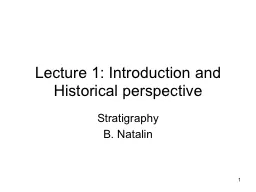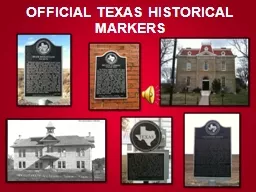PPT-1 Lecture 1: Introduction and Historical perspective
Author : lindy-dunigan | Published Date : 2017-04-21
Stratigraphy B Natalin 2 Prof Dr Boris Alekseevich Natalin Office E 502 Phone 285 6221 email natalinituedutr Website httpwebituedutrnatalin Assistant Ali
Presentation Embed Code
Download Presentation
Download Presentation The PPT/PDF document "1 Lecture 1: Introduction and Historical..." is the property of its rightful owner. Permission is granted to download and print the materials on this website for personal, non-commercial use only, and to display it on your personal computer provided you do not modify the materials and that you retain all copyright notices contained in the materials. By downloading content from our website, you accept the terms of this agreement.
1 Lecture 1: Introduction and Historical perspective: Transcript
Download Rules Of Document
"1 Lecture 1: Introduction and Historical perspective"The content belongs to its owner. You may download and print it for personal use, without modification, and keep all copyright notices. By downloading, you agree to these terms.
Related Documents














